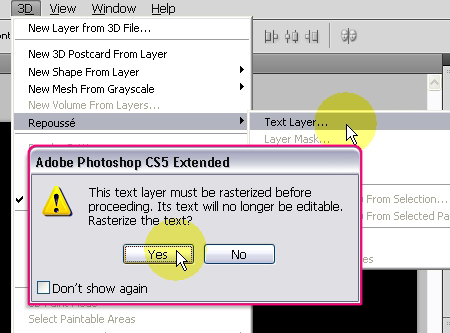
Next, if you have made adjustment layers with masks applied to them, I would highly suggest that you do not crop the image through the Smart Object. If you want these editing abilities on your background layer, you must open it as a Smart Object. If you do not open the image in Photoshop as a Smart Object, creating a Smart Object in Photoshop will not give you the same editing abilities.

So you will now have a layer at the top of your Layers panel which has all the visible adjustments made below, stamped into it (the rest will remain untouched).Ĭreating Smart Objects is that simple, and the flexibility they give you is tremendous! A couple of things to know about Smart Objects: Photoshop will create a new layer containing the merged layers. Or you can use the keyboard shortcut: Then do one of the following: Press Shift+Ctrl+Alt+E (Windows) or Shift+Command+Option+E (Mac). To do this, select the top visible layer (visible layers are denoted by the eye icon directly next to them), hold down the Option/Alt key, and select Layer > Merge Visible. Step 1: You need to create a new layer with all the adjustment layers combined (stamped) into that one layer – but you don’t want to flatten the image. But what if you want to create one after you have already made adjustments? To do this, follow these steps: These are the two methods for creating a Smart Object before being opened in Photoshop. If you do not wish to do this (it is set as a default), you can also hold down the Shift key and the Open Image button will change to Open Object at the bottom right of the screen. Make sure you have the Open in Photoshop as Smart Objects box checked. The Smart Object will update in Photoshop and you can carry on.Ĭlicking on this will open this dialog box.

But if it were opened as a Smart Object, all you would need to do is double-click the background layer, make any of the desired adjustments in ACR and you’re done. If you opened the image in Photoshop without it being a Smart Object, you would have to re-edit the image in Lightroom or ACR, then re-open the image in Photoshop, and finally, move any of the adjustments layers across to the new image. After editing the image, you decide that the colour temperature is a little off. So for example, say you adjusted an image in ACR and then opened it in Photoshop. These alterations will then be pushed through to the image open in Photoshop. When opening an image in Photoshop as a Smart Object, you have the ability to double-click the background layer (the base layer) which will open the image in ACR with all the adjustments you previously made, and enable you to make any alterations to the image. Smart Objects preserve an image’s source content with all its original characteristics, enabling you to perform nondestructive editing to the layer. The icon over the preview of the layer indicates that this is a Smart Object.


 0 kommentar(er)
0 kommentar(er)
